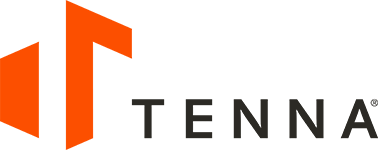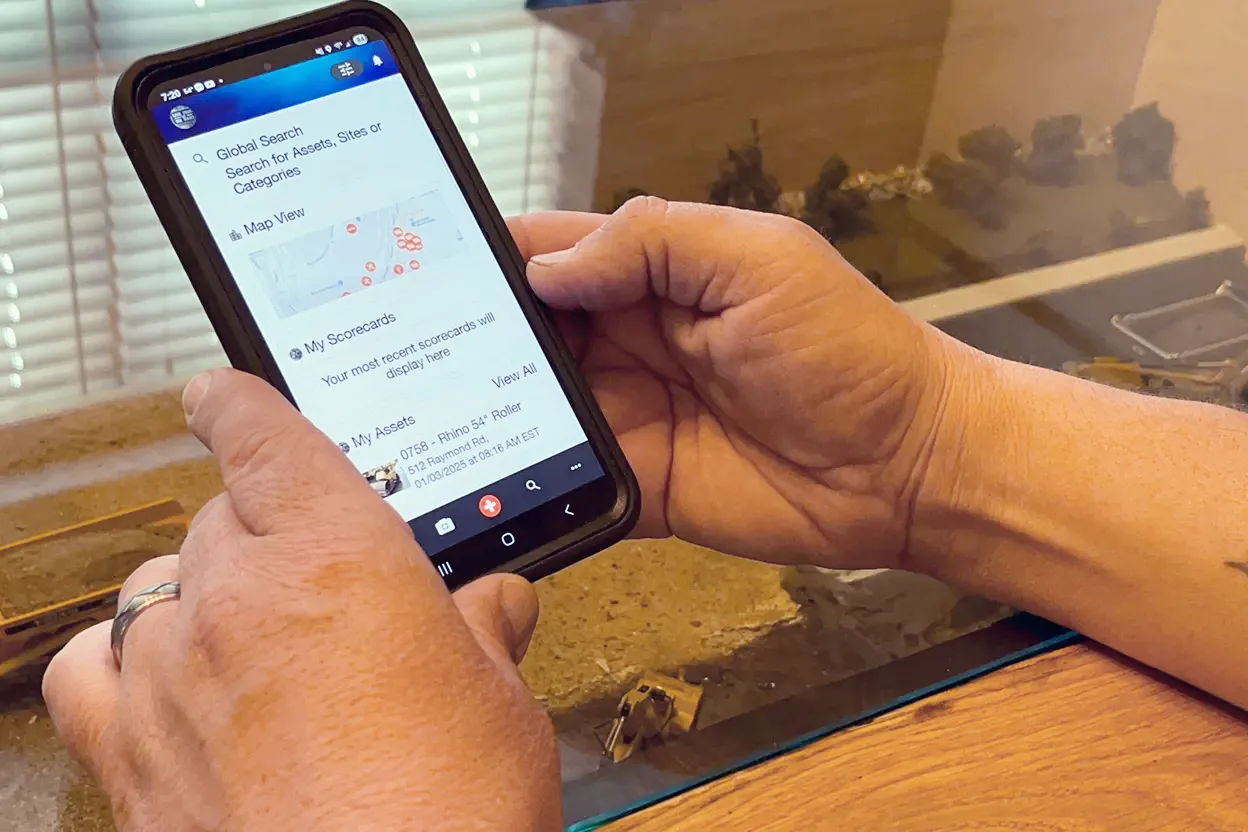Everything You Need to Know About Fleet Tracking Mobile Apps
- Sunil Puranik
- October 24, 2025
The modern construction job site is an active environment, marked by ongoing changes and a requirement for agility. While often perceived as a traditional sector, construction is increasingly embracing digital transformation, with mobile technology playing a significant role. Managing projects only from a fixed office is quickly becoming outdated. Today, operations are decentralized, mobile, and often managed with handheld devices.
This shift is not only about convenience, but it also reflects a strategic necessity influenced by the mobility and geographically varied nature of construction projects. Without the ability to monitor assets and personnel across different and extensive locations, businesses may face challenges and delays.
At the core of this transformation is the fleet tracking mobile app. This important tool is changing how construction teams watch and manage their valuable equipment in real time.
In this blog, we will explore the key features of a robust fleet tracking mobile app, discuss the benefits it offers to construction businesses, review real-world use cases, and ultimately illustrate why Tenna’s purpose-built solution is the best choice for contractors.
What is a Fleet Tracking Mobile App?
A fleet tracking mobile app is a solution tailored for modern day smart devices, offering real-time visibility and management functionality for a comprehensive fleet of construction equipment, vehicles, and tools. Its primary objective is to transform raw telematics and Internet of Things (IoT) data into operational helpers, accessible when you are on the move.
A good fleet tracking mobile app improves fleet management. It gives field teams important data that was once only available at a desk. It should promote a more responsive and agile operational environment by ensuring data is universally accessible. It also improves visibility and communication between teams.
This availability of information supports decision-making directly at the job site. When on-site staff can see the location of equipment, its status, and any maintenance needs, they can make quick, more informed decisions.
A strong fleet tracking mobile app is useful for many different users in a construction company. It is no longer limited to just the equipment manager. Now, it serves an important role for everyone involved in an asset’s lifecycle.
- Field Operators/Drivers can conduct necessary pre-start inspections (e.g., DVIRs), report equipment issues, and verify equipment location directly from their mobile devices.
- Equipment Managers benefit from real-time visibility into asset location, utilization metrics, and upcoming maintenance needs, which enhances fleet oversight.
- Mechanics can opt in to fault code alerts, access detailed maintenance histories, create and complete work orders, and log their daily hours and parts consumption directly from the field, facilitating timely repairs and payroll.
- Foremen use the app to ensure compliance, track team productivity, and manage daily operations more effectively, improving on-site control.
- Project Managers and Superintendents can get full visibility into what’s on their site, request new assets, and track status updates on dispatch requests and scheduled events.
Why Fleet Tracking Apps Matter in Construction
Construction operations are dynamic, with equipment moving between remote jobsites, making traditional manual tracking methods ineffective. Instant access to real-time fleet data is essential to minimize downtime and optimize workflows. A fleet tracking mobile app shows where assets are, their status, condition, schedule, who is assigned to them and how they are performing. This helps managers make smart decisions from anywhere.
Remote asset management is crucial for construction businesses and ease of use is key for field user adoption. An app facilitates workflows for dispatching equipment, submitting maintenance requests, and ensuring safety through the completion of digital inspections.
It also facilitates seamless communication between field, shop and office, reducing miscommunication and delays. Apps can be used via mobile devices in the field as well as on web browsers, increasing the use case and user types.
The financial costs of equipment management inefficiencies are significant. Without real-time visibility, contractors operate reactively, leading to lost productivity. A comprehensive fleet tracking mobile app addresses these issues by providing accurate, immediate data on assets.
Common Construction Pain Points Solved
| Pain Point | Industry Statistic/Cost | Business Impact | How a Fleet Tracking App Helps |
|---|---|---|---|
| Equipment Theft | Costs the industry $300 million to $1 billion annually | Significant financial loss, project delays, increased insurance premiums. | Real-time GPS tracking and geofencing provide immediate notifications for unauthorized movement, acting as a powerful deterrent and aiding rapid recovery of stolen assets. |
| Unplanned Downtime | Can cost construction companies $1,000 to $2,000 per hour | Massive financial drain, missed deadlines, damaged reputation, project penalties. | Proactive maintenance scheduling based on usage and timed services, coupled with field-initiated maintenance requests, reduces unexpected breakdowns and accelerates repair times. |
| Excessive Idle Time | On-road fleets/heavy equipment can spend 40–50% of operating time idling | Wasted fuel, accelerated wear and tear, increased emissions, reduced asset lifespan. | Telematics surfaces idle time so managers can implement policies and train operators to reduce unnecessary idling, leading to fuel savings and longer asset life. |
| Suboptimal Utilization | Average equipment utilization rates often hover around 50–60% | Underperforming assets, unnecessary rental costs, inefficient capital expenditure. | Asset and site utilization data enables right-sizing the fleet, reallocating underused assets, and making informed purchase/disposal decisions. |
Must-Have Capabilities in a Fleet Tracking Mobile App
A fleet tracking mobile app for construction businesses should provide essential features tailored to the industry’s needs. These capabilities work together to create a system that enhances operational efficiency, shifting from reactive problem-solving to proactive management.
Live GPS Tracking
A good fleet tracking solution should let you see the real-time location of your assets—no matter their size, cost, or features.
Asset Utilization Insights
The most effective fleet tracking apps offer more than just dots on a map. They deliver critical insights into asset utilization and provide valuable diagnostic information.
Maintenance Scheduling and Work Orders
Modern fleet tracking applications have significantly advanced to either complement or even serve as a substitute for comprehensive Computerized Maintenance Management Systems (CMMS). These apps facilitate the logging of maintenance requirements, the generation and assignment of work orders, the review of upcoming preventative maintenance schedules, and much more.
Equipment Inspection and DVIR Capabilities
Empowering operators to perform daily vehicle inspection reports (DVIRs) and comprehensive equipment inspections directly from their mobile device is a must. This includes the ability to upload photos, add notes, and digitally sign off on inspections.
This ensures compliance with safety regulations, identifies potential issues before they escalate into major problems, and creates an auditable trail of equipment condition, significantly enhancing safety on the jobsite. The best fleet tracking apps can automatically create maintenance requests when inspections fail.
Driver and Operator Monitoring
For vehicles and operator-dependent equipment, the app should track and alert on driver behavior events, such as speeding, harsh braking, and rapid acceleration.
Mobile Alerts and Role Based Notifications
Configurable push notifications sent directly to mobile devices for critical events are essential. These can include notifications for unauthorized usage, equipment entering or exiting geofences, maintenance triggers, or fault codes.
This allows for quick responses to events or issues that need attention. It helps prevent theft, reduces downtime, and ensures fast responses to important maintenance or safety issues.
Offline Functionality
Crucial for the construction industry, where remote jobsites frequently lack reliable cellular or internet connectivity, the app must allow users to access, download and record data even when offline. This data should then sync automatically once connectivity is restored.
This ensures uninterrupted data capture and operational continuity in remote or challenging environments, preventing data loss and maintaining accurate records regardless of network availability.
Multi Fleet and Mixed Asset Support
A good fleet tracking mobile app should support all kinds of assets. This includes heavy machinery, on-road vehicles, off-road equipment, small tools, and attachments. This offers one platform to manage all assets, removing the need for different systems and giving a complete view of operations.
Security & Permission-Based Access
Robust security features are essential in the construction industry, including permission-based access control that limits features and data visibility based on user permissions. This protects sensitive operational data, ensures data integrity, and provides a secure environment for all users, tailored to their specific responsibilities.
All these interconnected capabilities create a feedback loop for real-time operational adjustments. For instance, in the event of a potential equipment or truck theft situation, GPS tracking and mobile alerts provide instant notifications.
When an asset hits a service threshold, maintenance scheduling sends an alert. This lets mechanics create work orders on site. They can also order the needed parts without going back to the office.
This synergy means a complete fleet tracking mobile app creates a smart, self-improving system. It moves from solving problems after they happen to managing the fleet in a proactive, predictive, and efficient way.
How Tenna’s Fleet Tracking Mobile App Stands Out
Built for Construction from the Ground Up
Unlike standard fleet solutions, Tenna designed its equipment management app for the special needs of the construction industry. Its features, terminology, and workflows align with how construction professionals operate.
All-in-One Platform Integration
Tenna offers a truly unified platform that integrates tracking, maintenance, utilization, resource sharing, dispatching, and inspection data. The mobile app extends this system, ensuring data consistency and eliminating silos.
Superior Offline Capabilities
Recognizing that construction jobsites frequently lack reliable connectivity, Tenna’s mobile app boasts robust offline functionality. Users can add and process maintenance data and perform inspection without an internet connection. The data will sync automatically when they are back online.
This ensures smooth operation and data collection in remote or tough environments. It guarantees accuracy and continuity, no matter the network availability. This is a key advantage in the field.
Real-Time Alerts and Customizable Reporting
Tenna’s wide array of notifications is unmatched in configurability and need and role-based delivery mechanisms. As a customer, you have full control over what, how and when your appropriate team members need to be alerted to.
Intuitive User Experience for Field Teams
Designed with the end-user in mind, Tenna’s mobile app features an intuitive interface that is easy for field operators, mechanics, and foremen to learn and use.
Tenna’s “3 clicks or less” design means that construction businesses do not have to compromise. They get advanced, real-time data management that is easy to use and reliable on a construction site.
A Roadmap Driven by You: Tenna’s Customer-Centric Innovation
At Tenna, we focus on creating solutions that meet our customers’ changing needs. Our product roadmap is based on what our customers need. This way, every update and new product helps construction businesses like yours.
We believe that the best products come from listening to users and executing flawlessly to deliver solutions. This belief is part of how we develop our products. We gather feedback from customers throughout the product’s life. This ongoing conversation helps us understand how they feel about our products and where we can improve.
Our Customer Success team is key to this process. They provide support, answer questions, and help users make the most of their equipment management system. This direct communication allows us to gather detailed feedback.
By focusing on customer feedback, Tenna makes sure its fleet tracking app and platform grow with industry needs. This helps provide solutions that really improve mixed fleet management and construction operations.
Why Choosing the Right Mobile App Matters
Choosing an unreliable or unsuitable fleet tracking mobile app can cause more issues than it fixes. Problems like incorrect data, bad integration with current processes, and features that don’t suit construction can waste money. They can also cause ongoing operational issues and frustration for field teams.
Choosing a generic solution can create a “digital divide” in the company. This can alienate field teams and hurt the goal of digital transformation.
If a fleet tracking mobile app is not built specifically for construction, its interface might be confusing for operators, its features irrelevant to heavy equipment, and its offline capabilities lacking. This often leads to low adoption rates in the field, as users find it cumbersome or useless.
When field data is not captured accurately or consistently, the vision of an “all-in-one platform” breaks down. The office receives incomplete data, and the field feels unsupported. This creates a disconnect where the investment in technology fails to yield its promised benefits, leading to wasted money and a loss of trust in future technology initiatives.
Tenna’s proven track record in heavy civil and specialty contracting sectors demonstrates its real-world applicability and the trust it has earned within the target industry.
Conclusion: Manage Your Fleet Anywhere with Tenna
The right fleet tracking mobile app can help construction companies solve big problems like equipment theft, unexpected downtime, and underused assets. This leads to cost savings and better productivity. With real-time data and remote management, companies can respond quickly to issues instead of waiting for them to happen. This proactive approach gives them an advantage in a tough market.
By addressing key problems, a contractor can save money and improve project timelines, safety, and cost understanding. This helps with better bidding, resource use, and strengthens their market position. It changes the company from just managing its fleet to optimizing it as a valuable asset, preparing for future growth.
Request a demo to see why Tenna is considered a leader in construction technology and mobile capabilities.

About Sunil Puranik
Sunil, the Director of Product at Tenna, is dedicated to driving positive change in the construction industry. As one of the first engineers at Tenna, he witnessed the challenges faced by construction professionals, fueling his passion to develop innovative solutions. Leveraging his technical expertise, Sunil tailors Tenna's offerings to address industry needs, empowering construction companies to streamline operations and enhance productivity. Through active engagement with the construction community and a focus on staying at the forefront of innovation, Sunil is committed to making a lasting impact and helping construction professionals succeed in a dynamic landscape.








